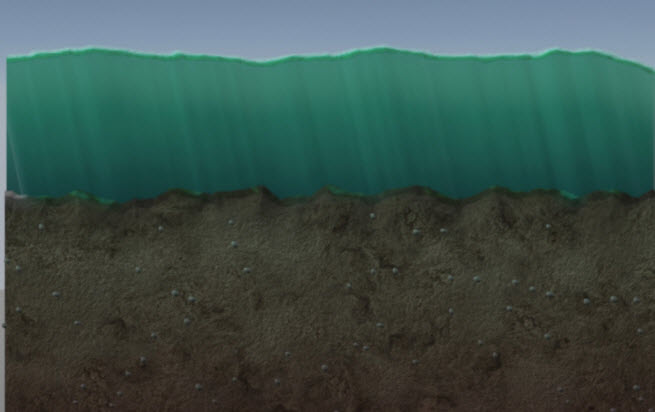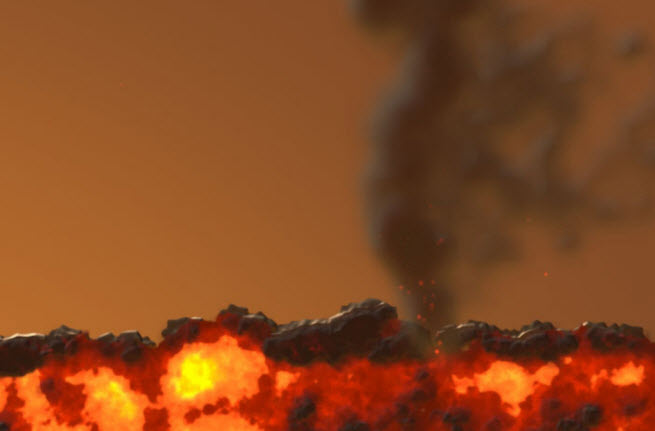GamesBeat: The next-generation PCs and the X86 consoles weren’t alluring enough for you?
Quigley: I’m pretty bullish on where tablets are going and on reaching a large audience with them. We’re building a pretty robust underlying simulation engine that will work on all these sorts of platforms. But because we’re a small, new development studio, we have to choose our battles, and we can’t say we’re going to simultaneously ship on five different platforms. We have to design for particular platforms and get them out and learn from them. As we get products out there, and as the simulation technology matures and deepens, then we’ll certainly look at developing for initial platforms. First things first.
GamesBeat: At some point, do you view mobile as catching up? You can always do more on a high-end platform, but …
Quigley: Up until a couple of years ago, mobile just wasn’t capable of doing simulations of the depth and complexity and sophistication that I’m interested in doing. There was not a lot of interest on my part or that of the other people I’m working with. But now mobile can do it, and it’s only going to get better. We’ll be able to do stuff that we can’t do now.
If we were developing for PC only, we could add to the complexity of the simulation in ways that we can’t if we’re trying to squeeze it all into mobile, but the fact is, mobile has crossed a threshold. It’s reached a plateau where it’s good enough to do the heart of what we want to do. The GPU performance in particular, but also the CPU performance of mobile is rocketing upward. I’m confident that it will only get richer from here.
GamesBeat: Do you think the 3D simulations mobile are kind of overdue now? It seems like the 2D format has lingered for a pretty long time on mobile.
Quigley: The touch interface encourages it. So part of it, I think, is the interface and the form factor. For example, the stuff that we’re building up is more like 2.5D, with layers of simulation elements from a side-view perspective, where you’re looking into cross-sections of the earth around the seas and the hearts of volcanoes and stuff like that. I can’t speak for what everyone else is doing, but for us, the way that you interact with and manipulate the physical elements of the simulation – things like pools of lava or waves of water crashing by or clouds drifting along – has driven us to a terrarium style, looking in from the side of the world.
GamesBeat: How are you anticipating growing now? How many people do you have, and how many do you think you’re going to need for this game?
Quigley: There are three of us. I expect we’ll remain that core of three for a while. We deliberately set out to build a simulation and a game design that takes advantage of a lot of the procedural techniques that we came up with in earlier parts of our careers, so we’re not in a position where we have to make 10,000 assets – houses or pieces of furniture or things like that. I expect us to stay pretty lean. The intent, for the foreseeable future, is to remain a three-person development team. In game development, so much of the pleasure of it is in creating something, not in managing large teams of people.
Part of the appeal of this is to be kind of like a rock band. We’ll have a core group of people, each skilled in a particular domain, who are cranking away on doing something they love doing. We’ll bring in the occasional guest number to do stuff as is necessary, but the intent is not to balloon up into a big management-heavy operation. We want to remain a small group of creators.
GamesBeat: So you won’t be selling it to EA at some point.
Quigley: No, the intent is to be self-sustaining. We’ll be doing stuff that is uniquely our vision.
GamesBeat: What did you think of SimCity as your postmortem view goes? What do you think about it in hindsight?
Quigley: It was startlingly ambitious. Maybe too ambitious, given that we had a finite number of people to work on it. I think it came out, all in all, quite well. The simulation is quite rich. I was very pleased with the visuals, which were my primary responsibility – before becoming creative director, I was art director. A lot of the creative direction stems from having a particular sensibility as far as what the city is supposed to look like, what it feels like, how it’s supposed to behave. The new SimCity has a long life in front of it. Just as there are still playing SimCity 4 today, there’s a very capable and competent team at Maxis who’ll be able to develop it and move it forward. I wish that the launch wasn’t as rough as it was. That obscured what I think is a pretty great piece of software. But that’s just the way it is.
GamesBeat: Did you change your mind about having an always-connected single-player game? Was that a bad move in hindsight, or do you think it could have been executed if they had enough servers in place?
Quigley: It was largely an execution problem. The user benefit from the constant connectivity is potentially huge. It’s a pity that the servers and the infrastructure weren’t there to pick up the demand and it wound up being a liability. But I’m confident that, in the fullness of time, it’ll add new dimensions to SimCity that it didn’t have before.
GamesBeat: Did anyone at EA have any parting words for you when you left?
Quigley: [Laughs] I’ve been there for so long. I first started with Maxis. before they were acquired by EA. I was in my early 20s, back in the mid-‘90s. I know so many people there so well. They were most excited for me, wishing me good luck, and sorry that I wasn’t going to stay and continue to work with them. But it was an amicable parting.
VentureBeat's mission is to be a digital town square for technical decision-makers to gain knowledge about transformative enterprise technology and transact. Learn More




